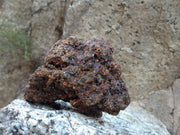
Disclosure
The studies below are preliminary and for educational purposes. Shilajit is not intended to diagnose, treat, cure, or prevent any disease. Consult your clinician before use.
Antiviral / Antiviral Properties
Early laboratory studies suggest humic substances in shilajit may have antiviral activity; human trials are still needed.
-
In-vitro antiviral activity of shilajit against HSV-1/HSV-2, CMV, RSV, rotavirus, VSV (lab study). PubMed
-
Humic substances (incl. shilajit fractions) showed anti-HIV activity in vitro. PMC
-
Clinical review of humic acid’s antiviral potential (context for the class of compounds). PubMed
Immune System Benefit
Components of shilajit (notably fulvic acid) are being studied for immunomodulatory effects; most data are preclinical.
-
Minireview: fulvic acid can modulate immune function, oxidative state, and GI function (review). PMC+1
-
Animal data: fulvic/humic acids stimulated humoral immunity. PubMed
-
Aquatic model: fulvic acid influenced mucosal immunity (mechanistic). PubMed
Radiation
Animal research suggests shilajit may help protect ovarian tissue from radiation-induced damage; human studies are needed.
-
Rat study: shilajit reduced markers of radiation-related ovarian damage. PubMed
-
Fertility preservation review notes shilajit’s traditional use and antioxidant profile (context). PMC
Heavy Metals (Safety)
Quality matters. Analyses show some shilajit products can exceed heavy-metal limits; choose products with 3rd-party COAs.
-
2024 review on metals in shilajit; emphasizes testing vs. WHO/FDA limits. PubMed
-
2025 study quantifying thallium in shilajit supplements—underscores need for testing. PMC
Altitude Adaptation
Shilajit is traditionally used at altitude; reviews suggest it may support adaptation and energy metabolism, but clinical evidence is limited.
-
Review: “Shilajit—a panacea for high-altitude problems” (mechanisms, adaptogen claim; narrative review). PMC
Blood Sugar Regulation / Type 2 Diabetes / Insulin Sensitivity
Early studies (including small human trials and animal models) suggest shilajit may support healthy glucose metabolism; larger clinical trials are needed.
-
Small clinical study in type 2 diabetes (“Madhumeha”) showing improved symptoms and blood sugar with shilajit-based therapy. PMC
-
Diabetic rat study: shilajit lowered glucose; additive effects with standard meds. Lippincott Journals
-
NAFLD rat model: shilajit modulated cytokines and reduced HOMA-IR (insulin resistance). PubMed
-
Ongoing RCT combining PE/Chromium/Shilajit in overweight adults (metabolic markers). ClinicalTrials.gov+1
-
Fulvic acid review proposes rationale for metabolic support (review). PubMed
Intestinal Regulation
Humic and fulvic acids related to shilajit are being studied for gut barrier integrity and microbiome effects (preclinical evidence).
-
Humic acids improved intestinal integrity and immune markers (animal). PMC
-
Fulvic acid shifted gut microbiota and metabolites (animal). PMC
Arthritis Benefits / Osteoarthritis
Preclinical data suggest anti-inflammatory actions and potential joint support; human OA trials are limited.
-
Classic animal study: anti-inflammatory and anti-arthritic effects of shilajit. PubMed
-
RCT in postmenopausal women: shilajit reduced inflammation/oxidative stress and preserved bone mineral density (bone health, not OA-treatment). PubMed
-
Clinical note: shilajit accelerated bone repair post-fracture (small clinical; bone regeneration context). PMC
Procognitive Benefits / Alzheimer’s
Compliant phrasing:
Reviews propose that shilajit’s fulvic acid and DBPs may support mitochondrial function and healthy cognition; human disease-specific trials are limited.
-
Procognitive review discussing mitochondrial mechanisms and potential in cognitive aging/Alzheimer’s. PMC+1
-
2023 lab/animal data on neuritogenic and neuroprotective effects (Andean shilajit). PMC
-
2025 vascular-dementia review (emerging, mainly mechanistic/preclinical). ScienceDirect
Testosterone Trial
A 90-day randomized, double-blind, placebo-controlled trial in healthy men (45–55) found shilajit increased total and free testosterone vs. placebo.
-
RCT in men: ↑ total and free testosterone and DHEAS with purified shilajit 250 mg bid for 90 days. PubMed+1
-
2024 mouse study: restored steroidogenesis after chemo (mechanistic). PMC
Chronic Fatigue
Animal models and a human performance study suggest shilajit may support energy and reduce fatigue under stress; more clinical data are needed.
-
Rat CFS model: shilajit prevented mitochondrial dysfunction and behavioral fatigue. PubMed
-
DB-RCT in adults: shilajit attenuated fatigue-induced strength decline (performance context). PMC+1
Liver Disease
In NAFLD animal models, shilajit improved liver histology and inflammatory/metabolic markers; human studies are pending.
-
NAFLD rat: improved histology, antioxidant balance. PubMed+1
-
NAFLD rat: improved cytokines/adipokines and HOMA-IR. PubMed+1
Obesity
Traditional formulations with shilajit have shown weight-related improvements in small clinical settings; evidence is preliminary.
-
Clinical series: obesity patients given shilajit (processed with Agnimantha) showed reductions in weight/BMI after therapy (non-blinded, small). PMC
Anti-Aging / Skin & Mitochondria
Human and mechanistic studies suggest shilajit may support mitochondrial function and skin microperfusion; anti-aging claims should remain conservative.
-
Human transcriptome study in women: shilajit upregulated genes linked to endothelial migration/ECM; improved skin microperfusion. PubMed
-
Human skeletal muscle transcriptome: shilajit promoted adaptation signaling in overweight adults (mitochondrial/energy pathways). PMC




